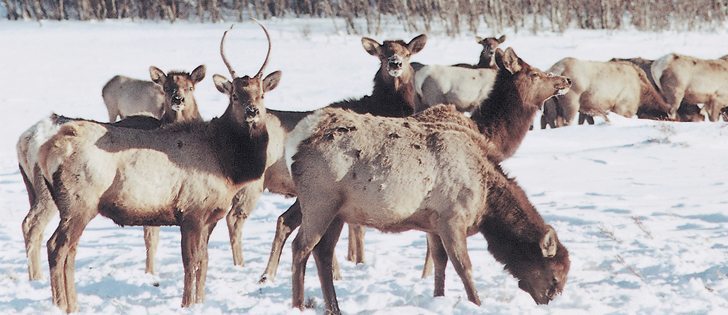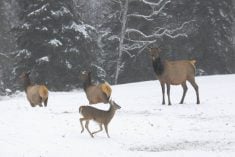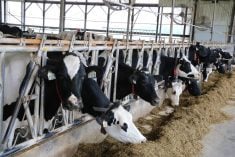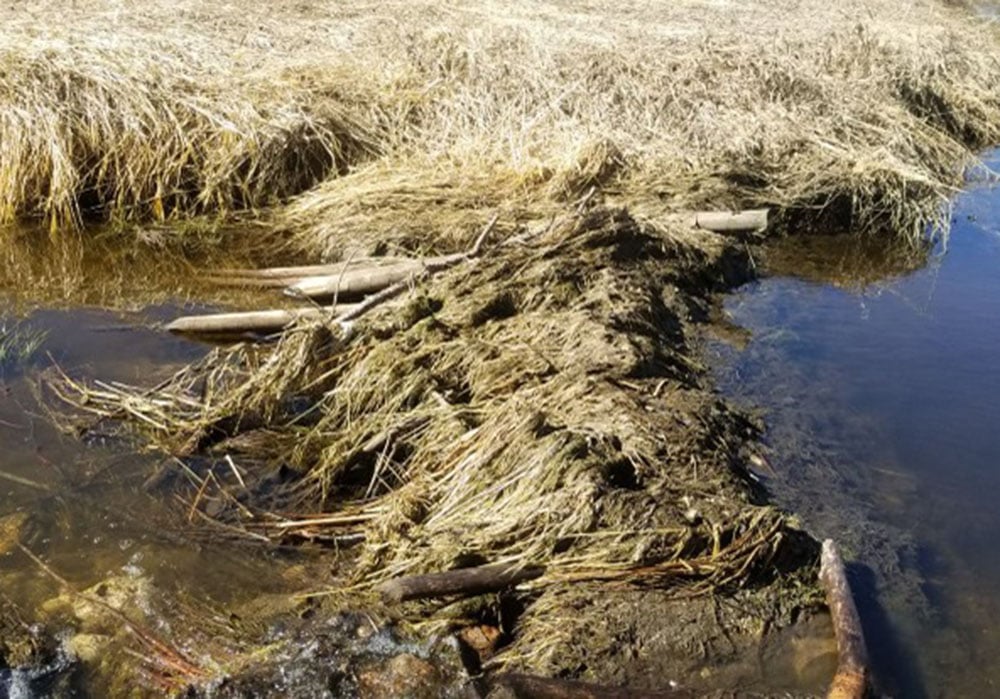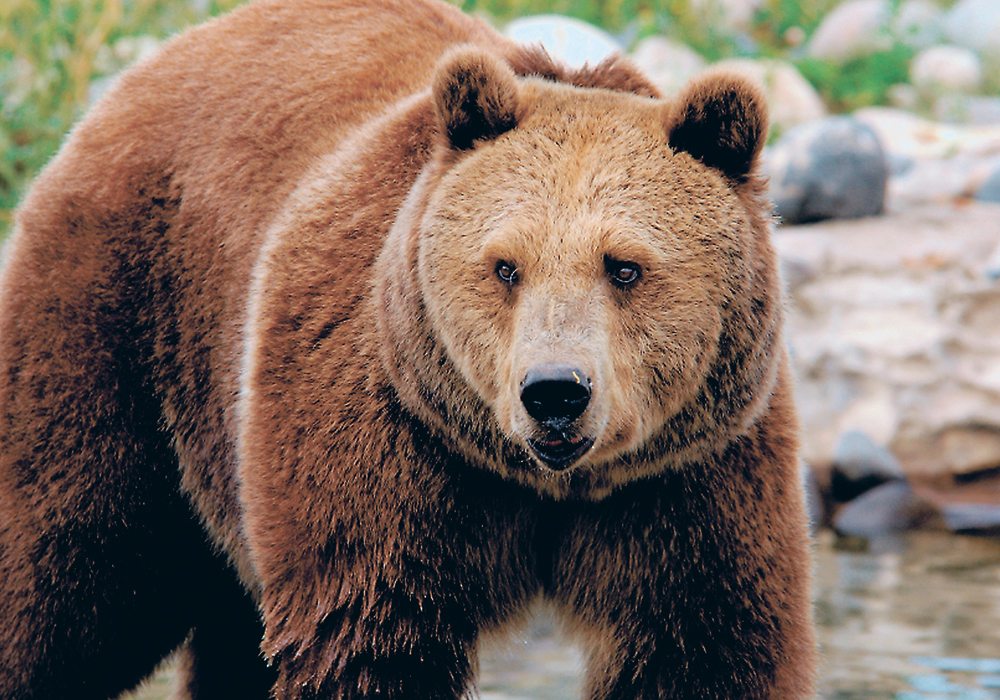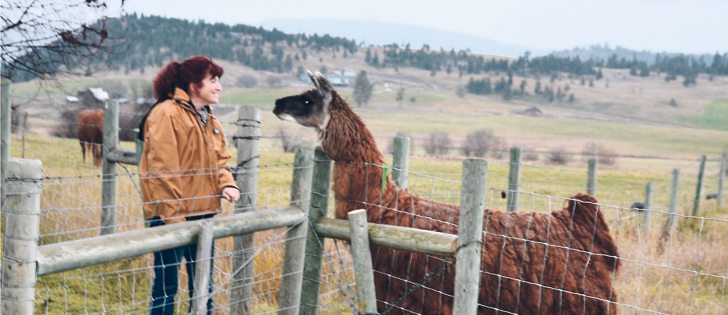Elk invasion | Producers concerned about roaming herds of elk that cause damage to farmland surrounding CFB Suffield
A decision to replace wild horses with wild elk at Canadian Forces Base Suffield in southern Alberta has turned into a disaster similar to introducing rabbits to Australia.
With no control plan, the 221 original elk transplanted to the base 20 years ago are now estimated to number 4,500 to 5,000, and the population doubles every five years.
“We don’t mind elk, but the sheer numbers scare us,” said Brad Osadczuk of Jenner, Alta.
While the core of the elk herd stays within the 2,600 sq. kilometres of the base, a growing number of elk are leaving Suffield, one of the largest military bases in the world, for the lush grass and crops on nearby farms and ranches. It’s not uncommon to see herds of 1,000 wintering on nearby ranches.
Read Also

University of Saskatchewan experts helping ‘herders’ in Mongolia
The Canadian government and the University of Saskatchewan are part of a $10 million project trying to help Mongolian farmers modernize their practices.
Jim Hearn of Bindloss, Alta., said he tries to manage and care for his grassland but is frustrated when the giant herds of elk come through like a cultivator.
“With their cloven hooves, they cut off the grass. Six hundred elk coming in really wrecks the place and that’s my livelihood, the grass,” said Hearn.
“It’s not uncommon to have 600 to 800 elk coming into the alfalfa. It’s not a good situation.”
The elk were transplanted to the base from Elk Island National Park as part of the park’s elk control program. The wild horses were removed from the base in 1994 and replaced with elk, believed to be a more suitable animal for the southern Alberta grassland.
Jeff Lewindowski of Jenner, Alta., said the elk have developed a taste for the oats and corn he planted for winter grazing for his cattle. He estimates the elk have ruined about 20 percent of the crop by using the fields as bedding or to rub their velvety antlers.
“I have the water and crop they’re after,” he said.
Ranchers also spend thousands of hours and thousands of dollars repairing fences.
“They don’t jump, they run through,” said Osadczuk, adding that herds can rip wire from a quarter mile of posts.
Hearn estimates fence repair costs $1,500 a month in time and labour for him or his help.
“I fix the fence two or three times a week,” said Hearn, frustrated by the lack of action from the military to control the elk that are becoming a plague.
“I’ve gone to 10 meetings at the base, and they hash it around and do another study,” he said.
“Farmers and ranchers are stewards of the land, but no one wants to contact us. It’s getting very, very frustrating.”
University of Calgary professor Cormack Gates was hired by the military in 2011 to do an “issues assessment” with landowners around the base.
As part of the assessment, Gates made three recommendations of how to manage the herd and have better public engagement with surrounding landowners. The military has partially adopted one of the recommendations and has started to cull some of the cows within the base.
Last year, 200 permits were allotted for four special hunts of female elk in November and December.
This year, it has increased the permits to 300 female elk, allotting 100 tags to hunters every week for three weeks as a way to help reduce the population.
“We do take this seriously,” said Michelle Hauck, the base public affairs officer.
“This year, 300 tags were issued through Fish and Wildlife, operating concurrently with the hunt outside the base. If the elk leave the base, there is a good chance they can be taken on the other side. We have a very large herd.”
However, Dale Eslinger, a retired senior wildlife biologist with Alberta Sustainable Resource Development, said 200 females could be killed if 300 tags were issued. Having the female elk hunt inside the base is a start to controlling the problem but a long way from counteracting the 1,000 elk born on the base each year, he added.
“Ideally you need to cut the herd in half.”
Relying on hunters to control elk from outside the perimeter has been unsuccessful. The elk, wary of getting shot at, become nocturnal, leaving the base in the dark and returning before dawn to its safe refuge, he said.
Lewandowski said hunters patrolling the base from his land have shot only one bull elk since the hunting season opened Sept. 4.
“The elk come onto my land at night and are gone by daylight.”
Lewandowski said the military’s decision to control the elk through hunting is transferring responsibility to landowners, who receive calls from 50 hunters a month wanting to shoot the trophy animals.
“It’s a full-time job dealing with hunters,” he said.
“The military dropped the ball. They don’t want to take responsibility and now it’s up to landowners to control the problem.”
Hearn has devised his own system of allowing small groups of hunters on his land on specific days as a way to improve the chances of the hunters shooting an elk and helping reduce traffic through his ranch.
“If I didn’t, there’d be 10 trucks driving across the fields.”
Before he retired in July, it was Eslinger’s job with the provincial government to work with base staff to try and control the elk population.
“I was given open direction to get something done.”
However, he said the national defence department cut the budget before a control plan could be developed and implemented, and the project was dropped.
“The military’s attitude is the population would be taken care of as they wander off the base,” he said.
“It was very frustrating for me personally.… This one has been hard to crack. The spirit of co-operation to go ahead has to be there.”
He said military training, rather than elk management, is the base priority. Soldiers from around the world come to the base to practice their military exercises.
Eslinger said the only way to control the population is to reduce the number of cows substantially. There is no public appetite to have a mass slaughter of elk, but he said the number of animals will slowly be controlled over five to 10 years by creating a strict herd reduction strategy and sticking to it.
“It’s something of a travesty that something hasn’t been done to work this out yet. It really does need some attention.”
In an area known for drought, Osadczuk worries ranchers will be forced out of business.
“If it gets dry, we’re in trouble. The way the herd is getting so big so fast, we’re really getting worried. We’re afraid it will be too late before anyone takes us seriously.”

